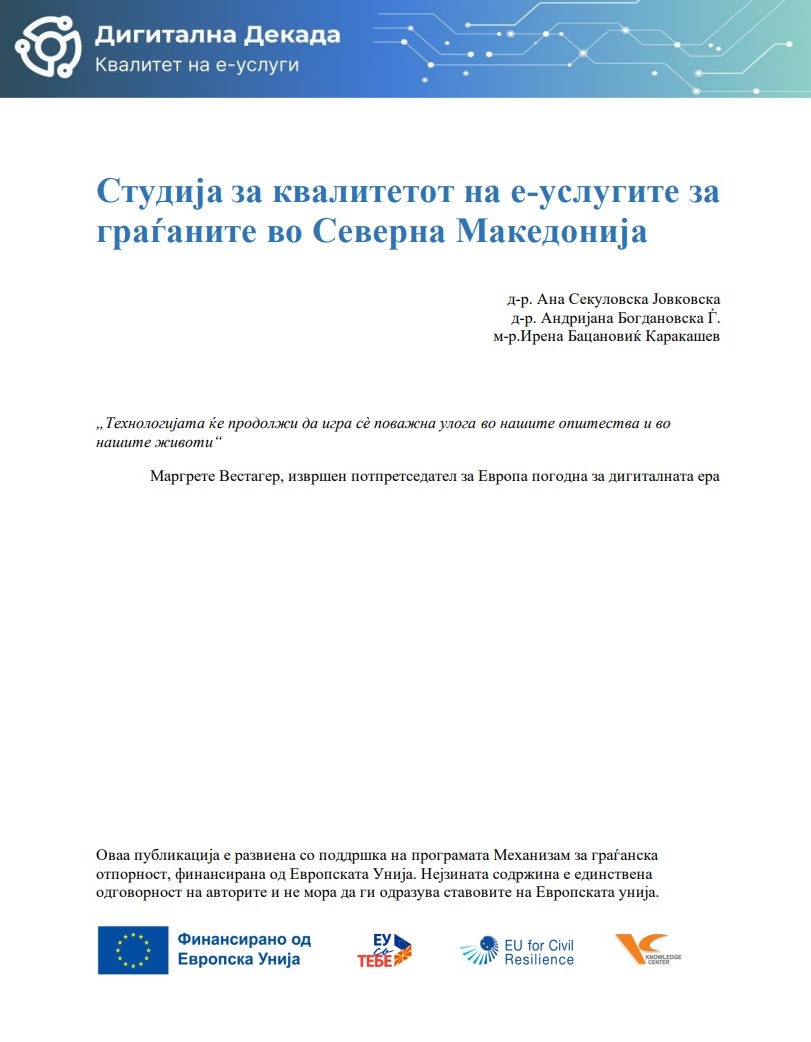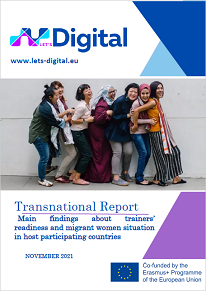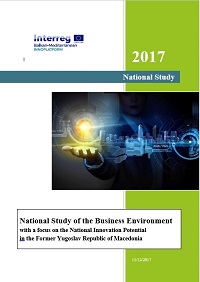Studies and Analyses
Citizens in Focus: Preparing for the Digital Decade

The study analyzes the state of digital transformation and the use of e-services in North Macedonia, focusing on the needs and challenges of citizens. Although there are legal regulations for digital services and a Central Population Registry, a legal framework for the security of networks and information systems is missing.
The digitalization of public services lags behind the EU and the region, partly due to weak political support and institutional ambiguity. The Digitalization Roadmap (2022-2030) offers guidance, but success requires increasing digital literacy and ensuring access for all citizens, including vulnerable categories.
Key recommendations: improving the accessibility and quality of e-services, increasing citizen participation, and strengthening the security and transparency of personal data.
👉 More information and access to the study here
You can read our short recommendations regarding digital services for citizens at the following links:
- Recommendation 1: Strengthening citizen engagement, through digital literacy, in shaping, optimizing and ensuring better quality of public e-services in North Macedonia
- Recommendation 2: People and their rights at the center of digital transformation
- Recommendation 3: Increasing the security and empowerment of individuals, transparency of personal data and artificial intelligence
Businesses and the Digital Decade in North Macedonia

The Knowledge Management Center conducted the study "Businesses and the Digital Decade in North Macedonia", which analyzed the digital services used by business entities and their readiness for digital transformation. The study shows the impact of digitalization on the operations of companies, identifies barriers and opportunities for improvement.
Although North Macedonia has a legal framework and the National Portal (www.uslugi.gov.mk) is a main point for digital services, the country lags behind in the European lists (35th place). Companies show interest in new technologies, but digital literacy, institutional coordination and unified digital practices are lacking.
👉 More information and access to the study here
You can find our brief recommendations for measures related to digital services for legal entities at the following links:
- Recommendation 1: Focus (orientation) on business entities, enabling better quality of digital public services
- Recommendation 2: Increased involvement of business entities in the creation, optimization and provision of better quality of public e-services in the Republic of North Macedonia
- Recommendation 3: Increasing security and empowerment of business entities, transparency of personal data and application of artificial intelligence
TRANSNATIONAL REPORT - Main findings about trainers’ readiness and migrant women situation in host participating countries (Spain, Italy, France and North Macedonia)

The research has been conducted in four countries (Spain, Italy, France and North Macedonia) with an aim to update the need analysis of trainers needs/gaps and to investigate the readiness of the trainers, needs and expectations on andragogical framework. It is part of the Intellectual Output 1 of the project Let’s Digital which covers Trainers’ social, professional and andragogical update needs research and creation of the competencies framework for trainers of migrant women.
You can download the report from teh following LINK
Innovators – Type, Context and Business Practice in the Balkan Mediterranean Area

The private sector in the Balkan Mediterranean Region (Albania, Bulgaria, Cyprus, Former Yugoslav Republic of Macedonia, and Greece) is characterized by dominance of micro enterprises. The total number of Micro Enterprises (1-9 employees) is 1.427.303 for 2016, with the highest number of 764.471 located in Greece. SMEs (10-250 employees) correspond to 77.929 in 2016, with 28.816 located in Bulgaria. Large enterprises correspond to 3.159 for 2016, with 1.690 of them located to Albania (above 250 employees), as well as the foreign controlled enterprises, which total number is 6.764, with 4.024 located again in Albania. ....
The Report on the Innovators – Type, Context and Business Practice in the Balkan Mediterranean Area can be downloaded here.
Innovation Potential and Dominant Emerging Industries: Skopje Planning Region

Skopje Planning Region is a leading economic performer and innovator at national level; however, despite these findings, the regional performance and innovation capacities lag behind EU regional average.
The Report on the Innovation Potential and Dominant Emerging Industries: Skopje Planning Region can be downloaded here.
Trends in International Mobility of Students 2000-2016 (EU, UK and the US)

After decades of liberalization of trade and capital, in the beginning of the new millennia, the focus is placed on the liberalization of movement of labor. These developments favor the mobility of young people in search of education and jobs outside of their birth countries. At the same time, these trends are also recognized as a tool for transfer of knowledge and skills across the nations favoring a more equal distribution of global wealth. The future looks promising, and yet distant, as many times, the international mobility of young people is challenged by the access to finances.
Today there is an emergence of two different paradigms when it comes to the role of higher education providers in the society. The first one, mainly present in the Anglo-Saxon countries (UK, US) perceives the higher education from a market point of view where students are recognized as the creators of demand. As a result, the cost of the Higher education is predominantly borne by the students, while the highest burden is placed on the shoulders of the international students.The US and the UK higher education systems are the main proponents of this paradigm. As a result, the available financial mechanisms for supporting international mobility of students in these countries are limited.
In contrast, the EU brings a new paradigm of the role of higher education institutions in the society, while current data support the sustainability and longevity of this paradigm. This paradigm sees students as the material, which is transformed during the process of higher education. Students are not the market; they are the product, while the market is the employers, the society at a large. The strong state support of the higher education in almost all EU countries accompanied with the Bologna process and the mechanisms under Erasmus + programme, remove many of the obstacles for financing the international mobility of students. Data indicate that these mechanisms are effective; the main issue however is, whether the product, i.e. the student skills meets the demand of employers.
CKM report on the global trends of the international mobility of students can be downloaded from the following link.
Study of the Business Environment and the Innovation Potential of FYR of Macedonia

There is no doubt nowadays that the source of competitive advantage of countries is the innovation potential of their economies; however, innovations are not only seen at micro level i.e. at organizational and industry level; they are also sought in the way countries govern and strengthen their economies. The study on the business environment and the national innovation potential of FYR of Macedonia, explores the macro and micro determinants of country’s innovation potential in the period 2010-2017.
You can download the study here.
National Innoscores can be downloaded here.
Sector Analysis in the Area of Competitiveness and Innovations

In the contemporary world characterised with liberalised markets, interconnected economies, and intensive use of new technologies, the state of constant changes is the new status quo. For an economy to sucesfully face the challanges associated with the constant changes it needs to develop a competitive advanatge based on innovations and knowledge in sectors which produce higher value.
The main aim of the analysis is to make a snap-shot of the current governemnt policies and programmes in the sector of innovation and competitivness in Republic of Macedonia with a special focus on the innovation, to review all current activities and measures, to identify and reccomend measures for improvement.
The Study can be downloaded at the following link.
Profiling Macedonian Innovation Performance!
This publication presents results from the Innovation Survey of firms operating in Macedonia, carried out by Knowledge Center from Macedonia and brainplus from Austria. The survey covers innovation activities of Macedonian companies in the period 2010-2013.
The study can be downloaded at the following link.
KNOWLEDGE MANAGEMENT AS A COMPETITIVE ADVANTAGE OF COMPANIES

Bogdanovska Gj., Andrijana
Recommended Reference: Bogdanovska Gj., A. (2013).Knowledge Management as a Competitive Advantage of Companies. Proceedings of the 10th Conference on intellectual Capital, Knowledge Management and Organizational Learning - ICICKM 2013, George Washington University, USA
ABSTRACT:
By merging existing theory, discussion and research in the areas of strategic and knowledge management, the paper argues in favor of the basic assumption of all schools on strategy – competitive advantage results into a superior performance of contemporary companies. Causation, however, can only be justified when knowledge management is introduced as a moderator in the equation. Although recognized as an important resource as early as 1950s, knowledge did not gain in strategic value until the emergence of the Resource Based View on Strategy in the 1990s. Realizing that knowledge is a dynamic capability and that today’s knowledge although protected, is not a guarantee of tomorrow’s success, contemporary organizations approached knowledge management as a system comprised of four knowledge management processes: creation, organization, dissemination (transfer and sharing) and use (applicability), open to the influence of the wider external and internal environment considered through the social and technological context of organizations. By focusing on the internal context, the paper presents an empirical model which can be tested in different environments. The internal context reflects the influence of three predominant KM platforms: structure, culture and technology. In the process, technology is recognized as a main enabler for capturing, storing and distributing codified knowledge, while organizational structure that fosters KM processes as flexible, lean, team based and customer oriented. In regards to organizational culture, adaptive and flexible cultures are recognized as supportive to knowledge generation; while stable and hierarchical cultures supportive to knowledge storage in organizational routines. At the end, the effectiveness of KM as a competitive advantage is approached through identifying superior financial and non-financial performance.
 English (UK)
English (UK)  Македонски
Македонски 
